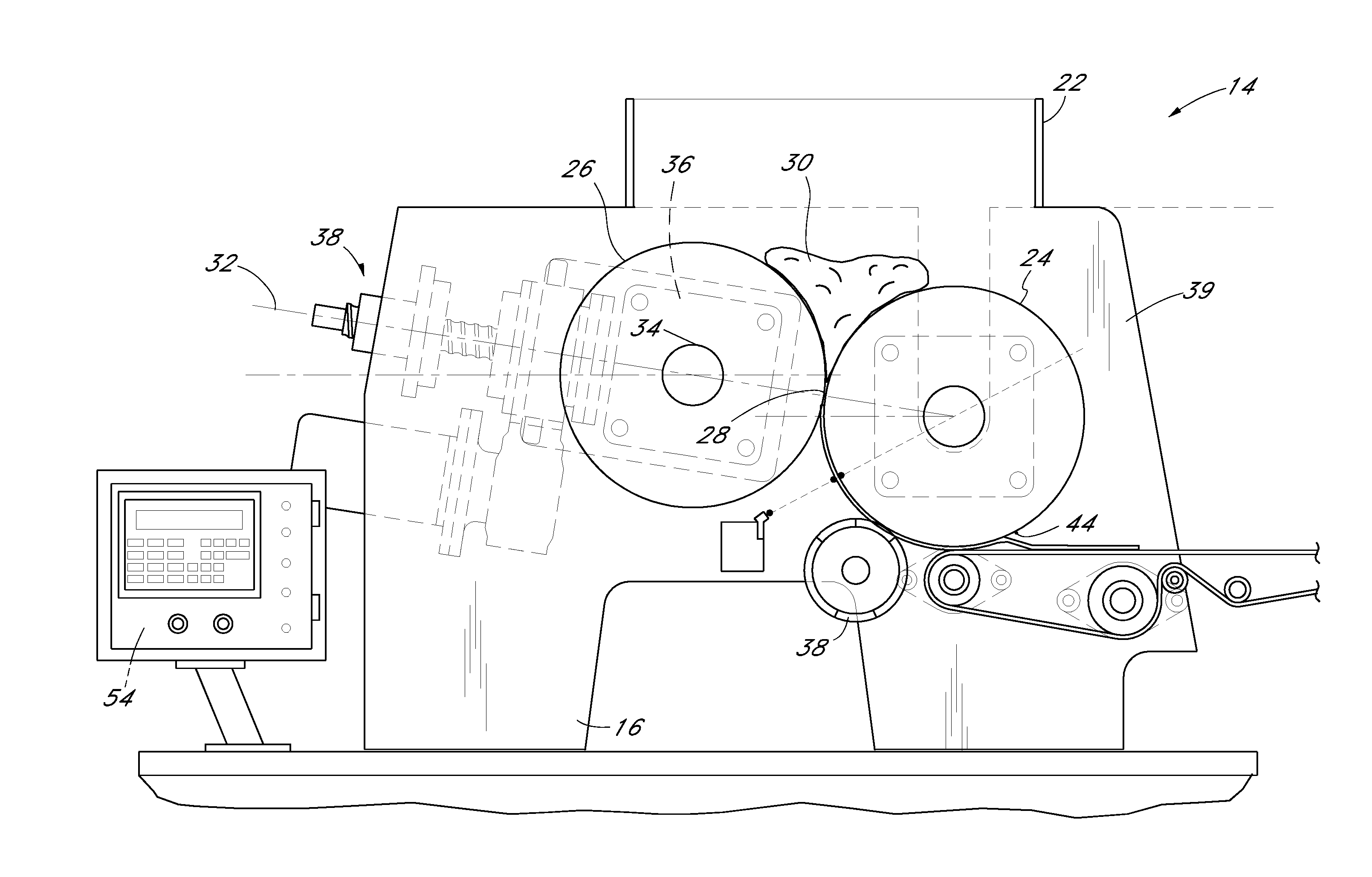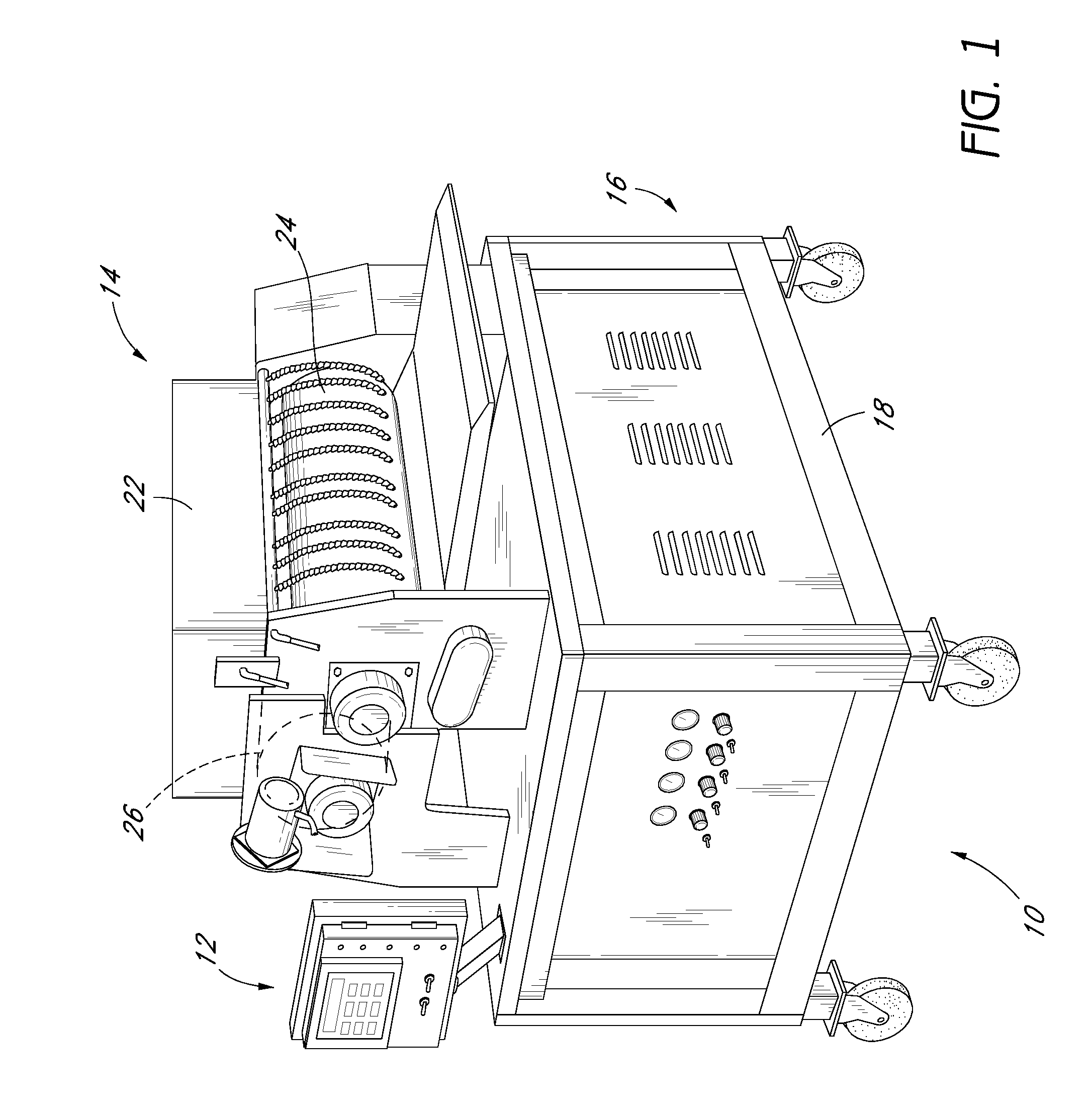Sheeter with thickness control
a sheeter and thickness control technology, applied in the field of sheeters with thickness control, can solve the problems of unintended movement of the roller, continuous stream of unacceptable product discharge from the sheeter, and significant displacement of the roller
- Summary
- Abstract
- Description
- Claims
- Application Information
AI Technical Summary
Benefits of technology
Problems solved by technology
Method used
Image
Examples
Embodiment Construction
[0038]The inventions disclosed herein have applicability to sheeters used in conjunction with continuously moving conveyor systems. However, an understanding of the inventions disclosed herein is facilitated with the following description of the application of the principles of the present inventions to dough rolling, and in particular, rolling dough into tortillas and tortilla chips. In some embodiments, the inventions disclosed herein can be used in conjunction with sheeters that have a sheet thickness control system, such as that disclosed in U.S. Pat. No. 5,470,599, the entire contests of which is hereby incorporated by reference. In particular, in some embodiments, the eccentric pinch point adjustment devices and the associated methods of operation disclosed herein can be used in place of the jack-screw type thickness adjustment hardware disclosed in U.S. Pat. No. 5,470,599, while using the same control system electronics, including the controllers, sensors, etc. as that disclo...
PUM
| Property | Measurement | Unit |
|---|---|---|
| thickness | aaaaa | aaaaa |
| mass | aaaaa | aaaaa |
| humidity | aaaaa | aaaaa |
Abstract
Description
Claims
Application Information
 Login to View More
Login to View More - R&D
- Intellectual Property
- Life Sciences
- Materials
- Tech Scout
- Unparalleled Data Quality
- Higher Quality Content
- 60% Fewer Hallucinations
Browse by: Latest US Patents, China's latest patents, Technical Efficacy Thesaurus, Application Domain, Technology Topic, Popular Technical Reports.
© 2025 PatSnap. All rights reserved.Legal|Privacy policy|Modern Slavery Act Transparency Statement|Sitemap|About US| Contact US: help@patsnap.com



